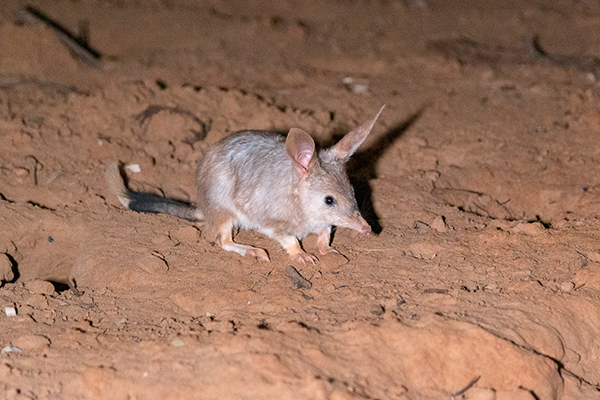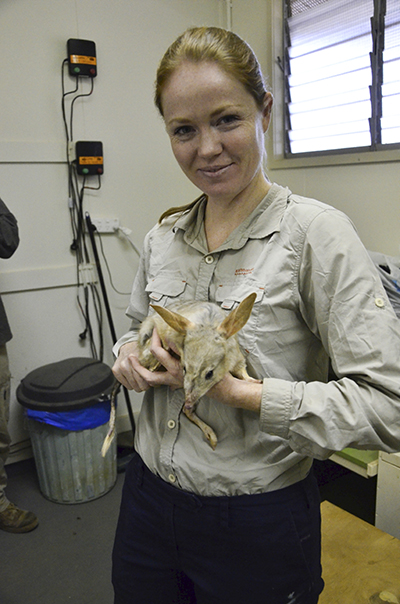The future of the bilby, one of Australia's threatened species could be secured with the help of University of Queensland researchers.
The UQ team is working with the Save the Bilby Fund to reintroduce the species to a 2850-hectare fenced reserve in far south western Queensland.
UQ PhD student Cassandra Arkinstall said bilbies will be moved from captive breeding facilities at Charleville and released in the predator-proof reserve at Currawinya National Park, 1000km west of Brisbane.
"After that I'll be able to monitor the health and movements of the bilbies as part of my PhD research, using small, specialised tracking devices attached to their tails," she said.
"Bilbies are nocturnal, solitary animals, and in the past they've proven difficult to track in the wild, so there's still a lot to learn about their behaviour."
 The miniaturised GPS tracking units will record movement pathways, enabling the researchers to assess home ranges and the location of burrows.
The miniaturised GPS tracking units will record movement pathways, enabling the researchers to assess home ranges and the location of burrows.
The devices also contain inbuilt accelerometers, providing a better understanding of bilby activity levels, such as when they emerge to forage and when they return to their burrows.
"These lightweight tracking devices will provide us with new insights into their ecology," Ms Arkinstall said.
The small, ground-dwelling marsupial once inhabited 70 per cent of the continent, but now faces an uncertain future due to introduced predators and habitat change.
Dr Sean FitzGibbon from the School of Agriculture & Food Sciences said the bilbies would adjust quickly to life on the reserve, helping revive their dwindling populations.
 "Bilbies are adaptable animals and, when the threat of cats and foxes is removed, populations can increase rapidly due to their extraordinary breeding capacity," he said.
"Bilbies are adaptable animals and, when the threat of cats and foxes is removed, populations can increase rapidly due to their extraordinary breeding capacity," he said.
"The fenced reserve will provide us with a secure population of wild bilbies, and eventually a source of animals for further reintroductions in other areas.
"We'll also examine the pouches of females at regular intervals to assess breeding success.
"Bilbies usually carry one or two young at a time, but they can rear several litters per year, especially under favourable conditions.
"Ultimately, we hope that this research contributes to the conservation of bilbies at Currawinya and all over Australia."
The research team is seeking donations to purchase 10 tracking devices, which cost approximately AU$2,800 each.
Donations can be made via the project's UQ Giving page.






